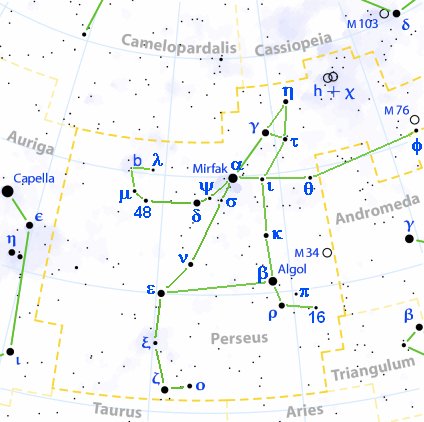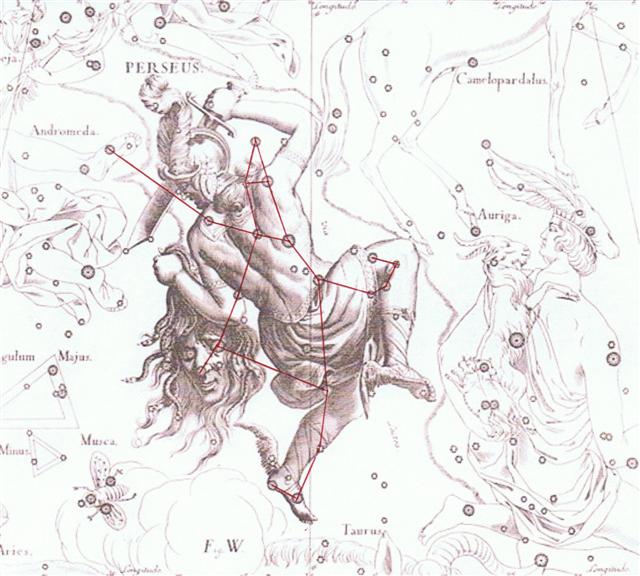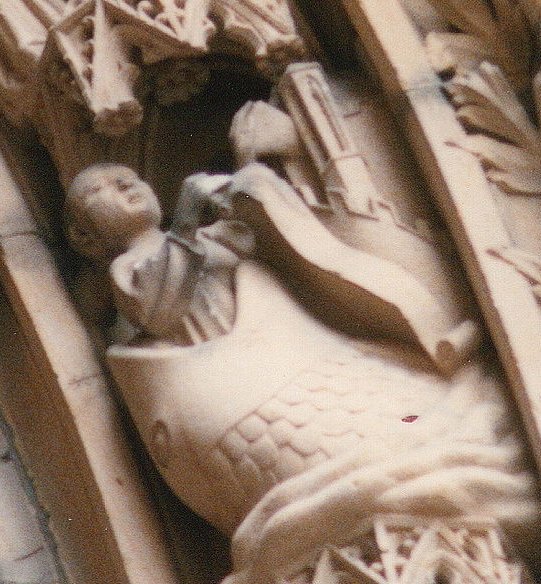462. Possibly the experience from the C text with its pair of zero (0 + 392 respectively 0 + 348) days, enlarging its length from 4 * 183 + 8 = 740 to 4 * 183 + 10 = 742 positions,
should be used in order to understand that the true length of the G text was (0 + 229) + (0 + 242) = 230 + 243 = 473 = 11 * 43 positions, a measure expressing 'one more' (return to life again), because 11 = one more than 10 ('fingers held high') ... The practice of turning down the fingers, contrary to our practice, deserves notice, as perhaps explaining why sometimes savages are reported to be unable to count above four. The European holds up one finger, which he counts, the native counts those that are down and says 'four'. Two fingers held up, the native counting those that are down, calls 'three'; and so on until the white man, holding up five fingers, gives the native none turned down to count. The native is nunplussed, and the enquirer reports that savages can not count above four ...
and 43 = one more than 42 ('assessors down in the underworld'): ... The four bereaved and searching divinities, the two mothers and their two sons, were joined by a fifth, the moon-god Thoth (who appears sometimes in the form of an ibis-headed scribe, at other times in the form of a baboon), and together they found all of Osiris save his genital member, which had been swallowed by a fish. They tightly swathed the broken body in linen bandages, and when they performed over it the rites that thereafter were to be continued in Egypt in the ceremonial burial of kings, Isis fanned the corpse with her wings and Osiris revived, to become the ruler of the dead. He now sits majestically in the underworld, in the Hall of the Two Truths, assisted by forty-two assessors, one from each of the principal districts of Egypt; and there he judges the souls of the dead. These confess before him, and when their hearts have been weighed in a balance against a feather, receive, according to their lives, the reward of virtue and the punishment of sin ...
11 + 43 = 54 = 2 * 27 = 3 * 18 = 6 * 9. February 23 (54) was the final station (Terminalia). 471 (= 229 + 242) = 1½ * 314 = 3 * 157 = 300 + 3 * 57, which should remind us of how Epimenides slept for 57 years in a cave (471 + 57 = 2 * 264 = 11 * 48) and how he then lived on to be 157 years (or 299 or 154): ... The original story was by Diogenes Laertius, an Epicurean philosopher circa early half third century, in his book On the Lives, Opinions, and Sayings of Famous Philosophers. The story is in Chapter ten in his section on the Seven Sages, who were the precursors to the first philosophers. The sage was Epimenides. Apparently Epimenides went to sleep in a cave for fifty-seven years. But unfortunately, 'he became old in as many days as he had slept years'. Although according to the different sources that Diogenes relates, Epimenides lived to be one hundred and fifty-seven years, two hundred and ninety-nine years, or one hundred and fifty-four years. A similar story is told of the Seven Sleepers of Ephesus, Christian saints who fall asleep in a cave while avoiding Roman persecution, and awake more than a century later to find that Christianity has become the religion of the Empire ... Probably the Seven Sages (Rishi stars in Ursa Major) corresponded to the planets of the week. The Circle Maker, the Geometer, Honi M'agel, slept under a rock for 10 * 7 = 70 years, after having planted a carob tree: ... The story is a close adaptation of Peter Klaus the Goatherd by J.C.C. Nachtigal, which is a shorter story set in a German village. The story is also similar to the ancient Jewish story about Honi M'agel who falls asleep after asking a man why he is planting a carob tree which traditionally takes 70 years to mature, making it virtually impossible to ever benefit from the tree's fruit. After this exchange, he falls asleep on the ground and is miraculously covered by a rock and remains out of sight for 70 years. When he awakens, he finds a fully mature tree and that he has a grandson. When nobody believes that he is Honi, he prays to God and God takes him from this world. Note also that the family name of Honi is also a term of geometry ('M'agel' is Hebrew for 'circle maker'), as well as the family name of Rip ('Winkel' is German for 'angle') ... The precessional distance down to the time when Itzam-Yeh was defeated had presumably been set to 70 right ascension days (an angle of 70º) because this corresponded to 10 'weeks': ... I already knew that the ceiba tree was the model for the sacred World Tree of the Maya, but I had never seen one in flower when I knew what I was looking at. I was really excited because normally you can't see the blossoms even if you're there when the tree is in blossom. The fully mature trees are hundreds of feet high and the blossoms are very small. It's a ceiba, I chirped and began looking for a branch low enough to see one of the blossoms up close. Joyce Livingstone, a retired teacher, did the logical thing. She bent over, picked up a fallen branch, and held it out for me to see. I was too excited and full of myself to listen. She tapped my arm more insistently and still I didn't hear her. Finally, in frustration, she grabbed my wrist and raised her voice, Will you look at these? she said, waving the branch, and finally I did. What I saw stunned me, for in her hand lay a perfect replica of the earflares worn by the Classic Maya kings. Suddenly I understood the full symbolism of so many of the things I had been studying for years. The kings dressed themselves as the Wakah-Chan tree, although at the time I didn't know it was also the Milky Way ... The branches with their white flowers bent down along their thighs, the double-headed ecliptic snake rested in their arms, and the great bird Itzam-Yeh stood on their head. I already knew as I stood under the young tree in Tikal that the kings were the human embodiment of the ceiba as the central axis of the world. As I stood there gazing at the flowers in Joyce's hand, I also learned that the kings embodied the ceiba at the moment it flowers to yield the sak-nik-nal, the 'white flowers', that are the souls of human beings. As the trees flowers to reproduce itself, so the kings flowered to reproduce the world ...
... We can count: 1842 AD (my assumed epoch for rongorongo) + 3149 BC (there was no year 0 AD) = 4991 and 4991 / 26000 * 365.25 = 70 precessional right ascension days. This means Itzam-Yeh had been defeated at heliacal Aldebaran in 28 May at a time in the Sun year which corresponded to day 148 - 70 = 78 (March 19) in the time-frame of rongorongo, i.e. 2 days before the Gregorian equinox and 6 days before the Julian day for spring equinox. This was where Aldebaran had been together with the Sun in 28 May ...
The Carob tree was evidently the World Tree, corresponding to the Mayan Ceiba, the Nordic Yggdrasil etc. Carob resembles the name of the spreading plant growing over Jonah, ... The idea of 'baptism' (Greek: báptein = dip) was probably inherited from the ancient Babylonians and their fish-god Oannes (Iōannēs, Giovanni, Juan, Ivan, Iain, Jean, Hans, John, etc) ... which was the Calabash (gourd):
...
Then the big Fish did swallow him, and he had
done acts worthy of blame.
But
We cast him forth on the naked shore in a state
of sickness,
... The state of the tree loomed large in their thoughts, because it came about at the same time the head of One Hunaphu was put in the fork. The Xibalbans said among themselves: 'No one is to pick the fruit, nor is anyone to go beneath the tree', they said. They restricted themselves, all of Xibalba held back. It isn't clear which is the head of One Hunaphu; now it's exactly the same as the fruit of the tree. Calabash came to be its name, and much was said about it. A maiden heard about it, and here we shall tell of her arrival. And here is the account of a maiden, the daughter of a lord named Blood Gatherer. And this is when a maiden heard of it, the daughter of a lord. Blood Gatherer is the name of her father, and Blood Moon is the name of the maiden. And when he heard the account of the fruit of the tree, her father retold it. And she was amazed at the account: I'm not acquainted with that tree they talk about. It's fruit is truly sweet! they say, I hear, she said. Next, she went all alone and arrived where the tree stood. It stood at the Place of Ball Game Sacrifice. What? Well! What's the fruit of this tree? Shouldn't this tree bear something sweet? They shouldn't die, they shouldn't be wasted. Should I pick one? said the maiden. And then the bone spoke; it was there in the fork of the tree: Why do you want a mere bone, a round thing in the branches of a tree? said the head of One Hunaphu when it spoke to the maiden. You don't want it, she was told. I do want it, said the maiden. Very well. Stretch out your right hand here, so I can see it, said the bone. Yes, said the maiden. She stretched out her right hand, up there in front of the bone. And then the bone spit out its saliva, which landed squarely in the hand of the maiden. And then she looked in her hand, she inspected it right away, but the bone's saliva wasn't in her hand. It is just a sign I have given you, my saliva, my spittle. This, my head, has nothing on it - just bone, nothing of meat. It's just the same with the head of a great lord: it's just the flesh that makes his face look good. And when he dies, people get frightened by his bones. After that, his son is like his saliva, his spittle, in his being, whether it be the son of a lord or the son of a craftsman, an orator. The father does not disappear, but goes on being fulfilled. Neither dimmed nor destroyed is the face of a lord, a warrior, craftsman, an orator. Rather, he will leave his daughters and sons. So it is that I have done likewise through you. Now go up there on the face of the earth; you will not die. Keep the word. So be it, said the head of One and Seven Hunaphu - they were of one mind when they did it ...
|
||||||||||||||||||||||||||||||||||||||||||||||||||||||||||||||||||||||||||||||||||||||||||
.jpg)







